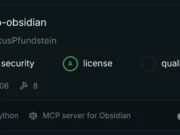Working with compressed files is a common task for any Linux user. Whether you are downloading software packages, transferring large projects, or archiving data, knowing how to unzip and extract files in Linux is an important skill. Linux provides several tools that make it simple to manage ZIP, TAR, GZ, and other archive formats efficiently. This guide explains different methods to unzip files in Linux using both command-line and graphical tools.
1. Understanding Compressed Files in Linux
Compressed files help reduce file size and group multiple items into one archive for easier storage and transfer. Some of the most common archive formats in Linux are:
- .zip – widely used across different operating systems
- .tar – a native Linux archive format
- .tar.gz or .tgz – a TAR archive compressed using Gzip
- .rar or .7z – popular in Windows but supported in Linux with additional tools
Knowing the file type helps you select the right command for extraction.
2. Unzipping Files Using the Command Line
The terminal is the fastest and most efficient way to extract files in Linux. Below are some commonly used commands.
a. Extracting ZIP Files
The unzip command is simple and available on most Linux distributions.
To extract a ZIP file, run:
unzip filename.zipIf the unzip tool is not installed, you can install it using:
sudo apt install unzip # For Debian or Ubuntu
sudo yum install unzip # For CentOS or RHELTo extract the contents into a specific directory:
unzip filename.zip -d /path/to/directoryTo view the contents of a ZIP file before extracting:
unzip -l filename.zipb. Extracting TAR and TAR.GZ Files
TAR files are commonly used for Linux packages and backups.
To extract a .tar file:
tar -xvf filename.tarFor a .tar.gz or .tgz file:
tar -xzvf filename.tar.gzExplanation of options:
- x – extract files
- v – display progress
- f – specify the file name
- z – decompress gzip
To extract to a specific location:
tar -xzvf filename.tar.gz -C /destination/folderc. Extracting RAR and 7Z Files
RAR and 7Z formats need extra tools. Install them with:
sudo apt install unrar p7zip-fullThen use these commands:
unrar x filename.rar
7z x filename.7z3. Extracting Files with the Graphical Interface
If you prefer not to use the terminal, Linux desktop environments such as GNOME and KDE offer easy graphical tools.
Simply right-click on the compressed file and choose “Extract Here” or “Extract to…”.
Some popular graphical tools are:
- File Roller (Archive Manager)
- Xarchiver
- PeaZip
These tools allow you to extract, preview, and create archives using simple drag-and-drop actions.
Conclusion
Learning how to unzip and extract files in Linux is an essential part of everyday file management. Whether you prefer the command line or graphical tools, Linux provides powerful and flexible methods for handling archives. By mastering commands such as unzip, tar, and 7z, you can manage compressed files easily and keep your system organized.














